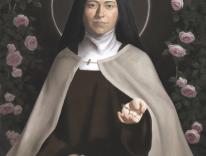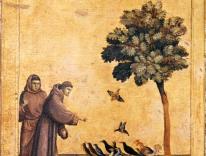The route today to St. Mary’s City, Maryland, is from the north. It snakes through sprawling suburbs, down Maryland’s western peninsula, and leaves behind the power centers of Washington, Baltimore, and Annapolis.
This is not how people in the seventeenth century approached Maryland’s first capital. Then they came by boat, up the Chesapeake to the Potomac, where they diverted inland to the St. Mary’s River. On its banks in 1634, St. Mary’s City was established by refugee English Catholics. Their settlement was the brainchild of the Calvert family, whose members influenced much of American colonial Catholicism, and whose name was later invoked by the Calvert Associates, the group that founded Commonweal in 1924.
Like Jamestown, Virginia, its predecessor settlement, St. Mary’s City simply vanished. Today it can be known only through its archaeological remains, the structures being recreated on the original site’s old brick foundations, and from the shards of human habitation reclaimed and exhibited in a nearby museum.
The area, now stunningly beautiful, was once harsh terrain. The small band of settlers, challenged both by the environment and the vagaries of human community, had crafted a vision for survival born of pragmatism and their own minority status. In seventeenth-century England, where politics and religion were conjoined, Catholicism was outlawed. As a result, in the Calverts’ new proprietary colony, separation of church and state was proclaimed and liberty of conscience for Christian believers ensured. In time, Catholics, Quakers, Presbyterians, and Anglicans all came to live here in peace, and with the end of Cromwellian rule and the ascent of the later Stuart kings, sympathetic to Catholicism, the colony finally stabilized and flourished. A symbol of its new confidence was the construction of a brick chapel in St. Mary’s City in 1667, followed by construction of the state house in 1676. The two buildings anchored the city, establishing its boundaries and solidifying its purpose.
The chapel stood for thirty-seven years-solid, imposing, inviting-but its future was imperiled. The choice of William and Mary as monarchs led to the appointment of a new, Protestant governor in Maryland, the relocation of the colonial capital to Annapolis, and the gradual decline and abandonment of St. Mary’s City. In 1704, the Church of England became the colony’s established religion, and St. Mary’s brick chapel was torn down. For centuries, its site was retained only in local memory.
Over two centuries later, in 1934, the original colonial state house was reconstructed, but only recently has the brick chapel been rebuilt. By the standards of the time, the original chapel was massive, measuring about twenty-three feet high and fifty-four feet from door to altar. Its foundations were three feet wide and five feet deep. Compared to the post-and-beam structures found elsewhere in the settlement, the chapel was monumental, built of locally made bricks and oyster-shell mortar. It had plastered walls, an imported sandstone floor, soaring glass windows, and a clay-tiled roof. The chapel’s pervasive baroque influence was the legacy of the English Jesuits.
You enter the reconstructed structure through a high arched doorway. Immediately, the interior claims your attention, forcing your eyes upward. The elongated windows allow light to pour into the building, relieving the heaviness of the thick walls and brick pillars. Yet the chapel’s triumphalism is muted. This was not the old world, where religion and politics jockeyed for power, but a new world in which the instinct for survival predominated-and sometimes faltered.
Today, the fields of St. Mary’s City are enclosed by split-rail fences used to delineate the historic sites. The newly reconstructed chapel towers above the rest of the re-created city. Its reemergence speaks in particular of the human capacity to reimagine the past, and it recalls the early settlers’ hard-won understanding of the precarious balance between politics and religion. It offers a further meditation on belief, the respect due individual conscience, and what it means to live at peace with one’s diverse neighbors. The chapel stands as witness to an early experiment, and a challenge to those who come to explore it.
Please email comments to [email protected] and join the conversation on our Facebook page.
Share
Previous Story
After Lebanon
Next Story
Tough Love

